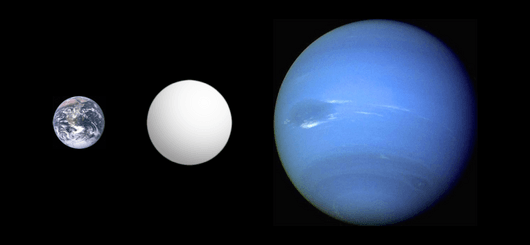Super-Earth facts for kids
A super-Earth is a special kind of extrasolar planet. This means it's a planet that orbits a star other than our Sun.
Super-Earths are bigger than our home planet, Earth, but they are not as huge as the "ice giants" in our Solar System, like Uranus and Neptune. Uranus is about 15 times heavier than Earth, and Neptune is about 17 times heavier. So, a super-Earth fits right in between!
The name "super-Earth" only tells us about the planet's mass (how much stuff it's made of). It doesn't mean the planet is like Earth in other ways, such as having a surface we could live on or having water.
Contents
What Makes a Super-Earth?
Super-Earths are defined by their mass. They are generally thought to be planets with a mass between 1 and 10 times that of Earth. Scientists use this range to help classify these distant worlds.
Discovering Super-Earths
The first super-Earth was found orbiting a pulsar (a type of dead star) in 1992. It was named PSR B1257+12 B. Since then, astronomers have discovered many more super-Earths using powerful telescopes and special methods.
One common way to find them is by watching for tiny dips in a star's brightness. This dip happens when a planet passes in front of its star, blocking a little bit of its light. This method is called the "transit method."
Another way is by looking for a star's "wobble." When a planet orbits a star, its gravity can make the star move slightly. Scientists can detect this tiny wobble and figure out the planet's mass.
Where Are Super-Earths Found?
Super-Earths are actually quite common in our galaxy, the Milky Way. Many of them orbit stars that are smaller and cooler than our Sun, called red dwarfs. Some super-Earths have even been found in the "habitable zone" of their stars. This is the area where temperatures might be just right for liquid water to exist on the planet's surface, which is important for life as we know it.
Images for kids
-
Sizes of Kepler Planet Candidates – based on 2,740 candidates orbiting 2,036 stars as of November 4, 2013 (NASA).
See also
 In Spanish: Supertierra para niños
In Spanish: Supertierra para niños






